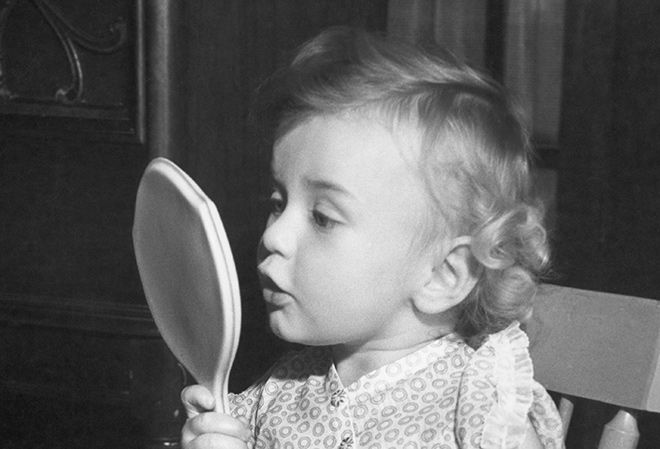Do you constantly talk yourself out of writing?

Last week I got the most disturbing message any writing group leader can get.
“Hey, Frank. I just wanted to let you know I’m leaving your group because I’ve decided to give up writing. Your group is not the problem. I love it. I just can’t do it anymore.”
My heart sank to my feet.
What happened to this person that made them want to give up writing altogether?
I didn’t have a chance to engage him since he’d clearly made up his mind. But still, it nagged at me. Why just give up?
Why did he believe he didn’t have what it takes?
The Killer of Creative Dreams
Self-doubt kills more dreams than anything under the sun.
You might say, “No, criticism is to blame. People carelessly toss negative, hateful comments at writers trying to find their way. The pain is so great, they quit writing to avoid it.”
What criticism really does is trigger the doubts you already feel.
Let’s be honest. Who hasn’t ever wondered if they were good enough? Who hasn’t thought their work sucks? Who hasn’t thought that maybe they made the wrong choice when they decided to take up writing?
Isn’t writing supposed to be fun?
It should be.
When you get an idea and you toss it around in your mind for awhile, you get excited. It’s like a snowball rolling downhill, gaining momentum. You grab a pen and paper so the idea doesn’t get away, lost in the 70,000 other thoughts you’ll have today.
Then you take a break to eat, work, or do laundry.
When you come back, a little bit of the luster is gone. How can you get it back?
Or worse, you tell one of your critical friends about your idea. Of course, they aren’t as excited as you are, but that’s okay. You tell them anyway. You have the fervor of an evangelist, and you won’t be silenced.
Then the criticism comes.
Why do I feel this good? I haven’t even tested this idea. Maybe she’s right. Maybe it won’t change the world. Maybe it’s not the next Harry Potter. Maybe I should just give up and start doing jigsaw puzzles for fun.
And on and on it goes.
Then your book dies on the vine. Your blog post doesn’t get written. You start doing safer, more acceptable things.
And your writing tastes about as good as lukewarm milk.
Self-Doubt: The Gift That Keeps on Giving
I can’t guarantee you’ll never second guess yourself.
You will.
What I can do is help you fight back when doubt assaults you.
Here are six strategies that will keep your pen moving no matter what your heart tells you.
If people complain, you’re making a difference
People don’t complain about things they don’t pay attention to.
When you get a negative comment, you convinced someone to read your work. Further, they were so captured by what you wrote that they had to write back.
That’s powerful.
More often than not, you’ll get nothing from 99% of your readers.
Be glad.
The next strategy will show you what to do with that critical comment.
When criticism comes, evaluate it and move on
The main thing you want to know is this:
Is there anything useful in this comment that will help me grow as a writer?
If so, see how you can apply it to the next piece you write.
If not, laugh it off and move on.
One remark doesn’t have to define you. Does one blog post sum up all that’s possible? One book? You’ve got more inside. Lots more.
Keep growing. Keep showing up. And don’t you ever, ever give up.
Your work won’t fit everywhere, but it will fit somewhere
Nobody sells to everyone.
I remember getting a pair of shoes from my father-in-law. They were nice shoes, fit to wear at any fancy occasion.
I squeezed my feet into them. I thought, “They’re only one size too small. Maybe I can make this work.”
I wore them to church, and that was the longest two hours of my life.
Don’t make your writing fit somewhere it doesn’t. You have an audience out there who are dying to read your words. Your writing will fit like a pair of shoes custom made for their feet.
Spend your time courting these people, and you can have whatever you want from your writing.
Schedule some rest
I’m going through Julia Cameron’s classic book The Artist’s Way with a small group.
In week 4, she urges us to do an exercise called Reading Deprivation.
What?
Writers have to read, right? If we don’t, they say our work will suck. And we can’t have that, can we?
Actually, we can.
Here’s why. When we bury ourselves in reading, whether it be books, the news, social media updates, or email, we surrender our creativity to other people’s agendas.
We need time alone with our thoughts. So sit at your desk and stare at the wall. Go for a walk and leave your phone behind. Do something random, like listen to country music when you’d rather listen to Jazz. Find some kids to play with and watch their sense of wonder unfold before you.
Planned disconnection will feed your creativity like nothing else.
Try it.
I think you’ll be pleasantly surprised at what happens.
Did you solve a problem?
One of the first things you learn in math class is that there is often more than one way to solve a problem.
For example:
- 2 + 2 = 4
- 1 + 3 = 4
- 4 + 0 = 4
Don’t even get me started on fractions.
When you wrote that post or book, did you solve a problem or meet a need?
If you did, you win.
So does your reader, at least some of them.
It would be great if you could find the one answer that will suit everyone. The problem is, that answer doesn’t exist.
So quit worrying about it.
Do what you do best, and use it to serve your readers. The ones who benefit will love you and tell their friends.
The rest will gripe and go away.
And chances are, you’ll never hear from most of them.
It’s impossible to write anything perfectly
I can’t tell you how many bestsellers have typos.
I’m not saying you shouldn’t edit. Obviously, you should. I am saying you should decide just how much editing you’ll do.
Edit enough for your work to make an impact. If it’s effective, it’s as close to perfect as it ever needs to be.
Let’s face it. You can always say more and say it better. But you only have so much paper and so much time. You have to put food on the table and keep a roof over your head. Limit your time and aim high while you write.
Then ship it.
That’s the key that will unlock the floodgates of productivity for any writer.
Now go get ‘em, tiger!
Which of these techniques can you use this week to overcome your doubts?
Pick the one that scares you the most and do it.
Then come back here and tell me how it went.
Have questions? We’re here for you. Self-doubt doesn’t have to win. There are people out there waiting to hear what you have to say. Don’t deny them the benefit of your hard-won insights.
You’ve got this!

